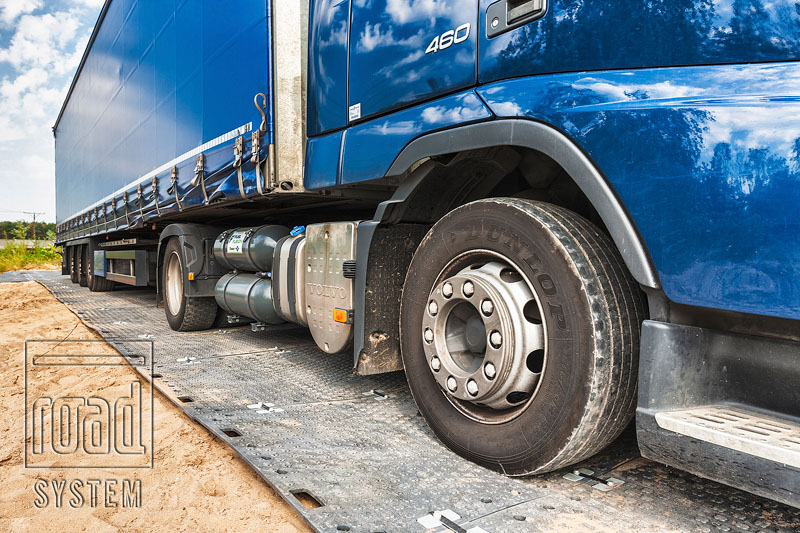What is an internal road?
According to the definition, an internal road is any road that cannot be classified as a public road and is not located in the road lane of such roads. Both the beginning and the end of the internal road must be marked by an appropriate road sign (D-46 and D-47).
What else distinguishes an internal road? The definition states that it can be owned by private entities. Such a private internal road may therefore be a road on the property leading to further buildings or a temporary internal road on a construction site.
Each of these can be constructed from durable components such as ROAD SYSTEM road plates. This will result in a highly resilient internal road in a short period of time. What does it mean?
E.g. a quick solution to a case such as the following:
The expansion of the production facility made it necessary to pave internal roads for trucks. Importantly, a solution was needed whose installation would not force the use of a substructure and would allow the temporary movement of vehicles to the loading areas.

Construction of a temporary road
How was the construction of the temporary road carried out in our example? Thanks to the ROAD SYSTEM, very efficient:
- spreading the ROAD SYSTEM road plates directly on the ground was possible because the soil had good permeability and hardness,
- The plates were laid very quickly as soon as the ground was level, thanks to the innovative design of the dedicated ROAD SYSTEM LINK connectors,
- The road was laid in the classic manner by aligning the slabs with their shorter sides facing each other. This resulted in a width of 3.6 m,
- On the route thus created, lorry traffic could move without problems, with a maximum speed of up to 10 km/h.
It is therefore important that they are created from elements that are easy to assemble – then the road is built very quickly and its construction does not block other works.
Internal road – building law
The temporary access road (including the internal one) and the way it is constructed are subject to certain additional regulations. What should distinguish an internal road? The width must not be less than 3 metres. It is also necessary to obtain planning permission before work can begin.
The management of such a road is also different from that of public roads. What is worth knowing in this regard?
The Building Act states that the construction, alteration, repair and protection of an internal road is the responsibility of the designated manager or (when one has not been designated) the owner of the property.
However, there are no precise guidelines as to what materials should be used for internal roads and temporary access roads.
Design of temporary internal road
Before a temporary (internal) road is built, its design must be prepared. Such a temporary road design should take into account the other works to be carried out on the site in the near future and, for example, the location of buildings yet to be constructed. This makes it easier to delineate the internal road so as to avoid having to modify it later.
Sometimes, however, temporary internal roads need to be rebuilt, despite careful planning. Changes are much easier to make when they are temporary modular roads, i.e. roads made up of larger, interconnected elements. If, in addition, they are lightweight elements such as ROAD SYSTEM road plates, the work will go completely smoothly. Temporary roads will be built at record speed, allowing further construction work to continue quickly. You won’t need to use specialised heavy equipment to prepare them – 2-3 people and basic tools will suffice! This saving of time and resources will also save investors’ money.








